For almost forever, RC model clubs have cooked up all sorts of ideas to keep their members interested in attending flying-field events. These outings bring the members and their families together and promote the growth of the hobby—and the club—while offering some weekend summertime fun! Thus, the fun-fly was born.
(Above) Typical Sportsman and Intermediate class fun fly planes
In the beginning, these impromptu events were friendly off-the-cuff endeavors that required pilots to execute simple flight tasks between trips to the BBQ and picnic tables. Timed flights, touch-and-go challenges and even non-flying, taxiing events around balloon pylon courses were the norm. These early events gave tired old trainers and worn-out sport models a new lease on life, since they were considered more or less expendable. Competition, however, soon changed all of that. As pilots became more interested in improving their scores their models evolved to give them an edge. Soon, fun-fly-specific models dominated the day! Performance went through the roof, and various levels of competition, typically Sportsman and Expert classes, had to be created to keep newcomers interested in all the action. Manufacturers noticed all the excitement, and now, being successful in fun-fly events has never been easier. There are more fun-fly ARF models than ever before, and they make great noncompetitive sport flyers, too. Whether you want to bring home the gold or you just want to improve your 3D flight skills, fun-fly ARFs are the way to go. Let’s see what all the excitement is about!
WHERE TO START
Several type of the models fall into the fun-fly category. They range from standard-type models with full fuselage construction and landing gear design to lightweight specialized competition fun-fly machines. These feature minimal lightweight construction, carbon-fiber tail booms and single mono-type landing gear. (easy to repair wire landing gear too are very popular.) It is best to start with the Sportsman class with a model you are comfortable with and that you can fly in all sorts of weather conditions. This takes practice. Fly as much as you can and shoot lots of touch and go’s. With most contest, you have to end the task on the ground with the engine still running to earn the maximum amount of points. A tail-dragger plane is preferable over tri-cycle gear models as they are more rugged, weigh less and provide more ground clearance. As your skills improve your model’s performance can be increased as well. And there a lot of great models to choose from.
(Above) Any airplane you are comfortable with can be a good fun fly plane!
GETTING THE EDGE
What makes a good fun-fly model? To get the most performance out of a model, you need a good power-to-weight ratio, so y ou can either increase your engine’s size, or you can lower the model’s overall flying weight!
At the higher end of the competition spectrum, it is a little of both. Competitors use the biggest powerhouses they can fit into their models and typically attach a power increasing, tuned-exhaust system (often homemade); they lighten the model’s structure with judicious use of carbon-fiber reinforcement applied to lighter grades of wood. Some of these models have remained popular and unchanged for years, but others are built, crashed, redesigned and rebuilt year after year. That’s known as fine-tuning! In the pursuit of weight reduction, unnecessary elements were eliminated. Model design became simpler: servos and fuel tanks got smaller, wing ribs got fewer, and landing gear layouts were minimized.
Another important part of a fun-fly model is good slow-speed performance. That comes with weight reduction, but nice, thick airfoils add to the low end of the flight envelope, too. Increased lift and drag, produced by fat wings, help in landings and during cornering and looping maneuvers. Coupled with a powerful, lightweight engine, fun-fly airplanes can offer sparkling performance.
MORE CONTROL
To decrease the time it takes to execute a specific set of maneuvers or tasks, a fun-fly model must be able to climb like a monkey and turn like the devil. To do this, control surfaces have to be bigger, and the servos used to control them have to be fast and strong as well as lightweight. At today’s top levels of national competition, models with 42-inch wingspans often have ailerons as wide as 5 inches and elevators that make up 70 percent of the tail surfaces. If not eliminated from the airframe altogether, movable rudders are also becoming enormous!
Managing the control throws also becomes important as their sizes increase, and this is where computer radios come in handy. Getting maximum performance from your servos and control-linkage setups is much easier with the flexibility computer radios offer. Common mixing programs include mixing flaps with elevator for tighter loops; mixing flaps with ailerons for four-surface wing setups to make flaps and ailerons work together; and setting up landing configurations to combine throttle, flaps/spoilers and elevator control for consistent spot landings. Once you start flying fun-fly models, you won’t be able to put the computer radio down!
In competition, when a fraction of a second can make all the difference, everything must be optimized. Since the models must have good climb rates while keeping their airspeeds down, they require low-pitch propellers. Depending on the model’s design and purpose,a typical .32 to .36 glow engine will use an 11×4 prop. The faster an engine can respond, the better, so lightweight wooden props are favored, as they can spin up more quickly than composite and plastic props can. When it comes to getting into the winners’ circle, it’s all in the details.
MANEUVERS & EVENTS
So what do you do with a fun-fly airplane? Why, you fly, of course! And you learn to do basic aerobatic maneuvers and tasks as fast as you can! Flying for fun at your local field is a great way to hone your skills, but to truly experience all the excitement, you have to attend a real fun-fly event. There, you compete against others and learn by doing.
Here’s a tip: go to your first few events thinking, “I want to learn and have fun,” and you’ll have a great time. Two types of competitions make up most fun-fly events: timed and task. In timed events, y o u fly a task or a set of maneuvers while under the clock, and the shortest time wins.
Task events include things like bomb drops or balloon bursts, and your score is determined by how well you do. Events usually start when you start your engine, but some start and stop mid-flight. Usually, there are three or more rounds flown per day with three to five events in each round. An overall winner is determined by tallying the scores from every round.
(Above) Coming in for a Touch n Go, this fun fly plane has lightweight construction and large control surfaces.
COMMON MANEUVERS
Timed events (lowest times wins)
Touch-and-go’s: do as many as you can in the time allotted, or do a certain number and whoever does them the quickest wins.
Dice throw: throw the dice and do that number of loops, rolls, spins, etc.
Roops: take off, do a specified number of loop-and-roll combinations and land.
Limbo: fly under a ribbon a specified number of times.
Deadstick glide: take off and climb for a predetermined amount of time, shut down the engine, and glide back down. Longest flight time wins.
(Above) To earn all your points your flight has to end on the ground with the engine still running!
TASK EVENTS
Bomb drop: take off with bomb attached; drop it onto a target. Closest to center wins.
Balloon break: take off and attempt to hit a balloon atop a tall balsa stick within a specific number of passes.
Spot touch-n-go’s: Take off and make several touch-and-go’s at a target (number of attempts predetermined). The target has three rings, highest points at the center and lower points as you go out. Add up the total points.
Of course, there are many other maneuvers that are combinations of several tasks. The variety of things you can do is the greatest part about fun-fly events. T o make the tasks and timed events a bit more demanding, many contests require that your engine still be running at the end of an event. If you snub your prop on the last landing, you get a zero for that event.
To find out more about where and when regional and national fun-fly events are being held, be sure to check the National Competition Fun Fly Association (NCFFA) and RC Universe websites (ncffafunfly.org and rcuniverse.com/forum). They are very informative and contain lots of great product info and event commentary.
(Above) Judges and pilots alike have fun on the flightline! If you win, you’re ahead of the game!
The most important thing is to be consistent and finish every event. If you get good scores in one event but then nose over and earn a “did not finish” (DNF) in the next one, you won’t finish well. Finishing all your flights, even if not in the top spots, will earn you a better overall standing at the end of the weekend.
So what are you waiting for? Jump into the fun-fly arena and be part of the action!
(Above) Fun with friends! It doesn’t get any better than that.



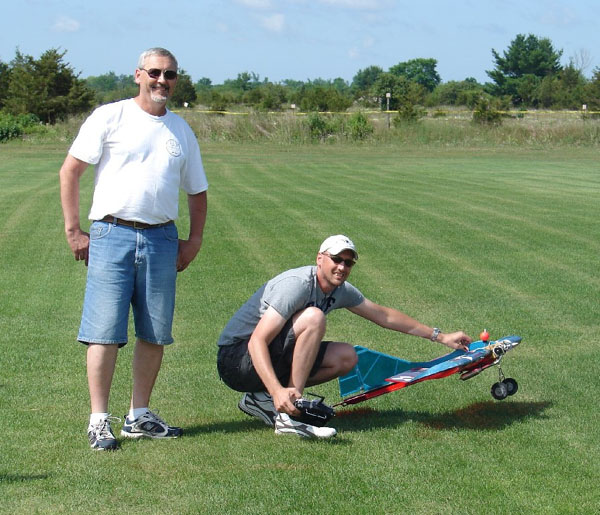

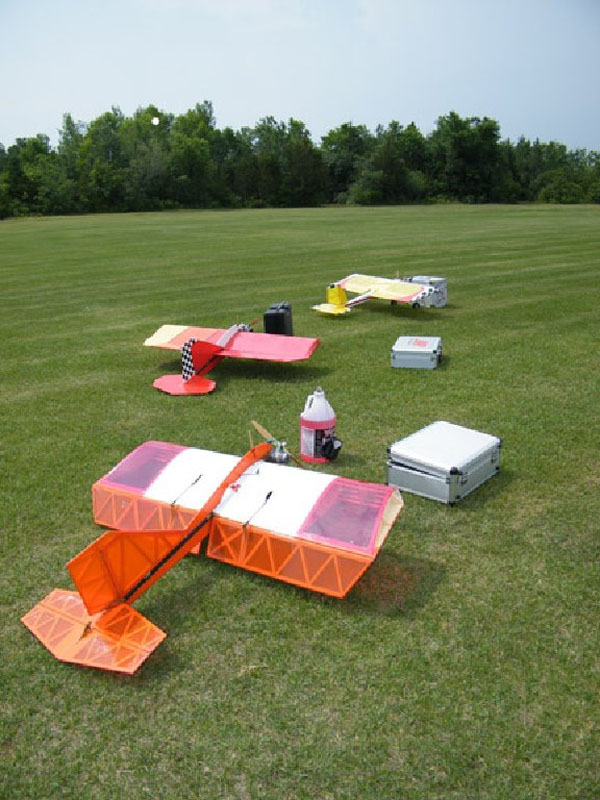
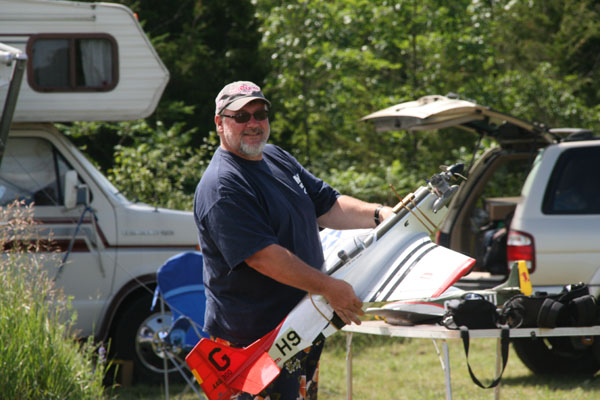

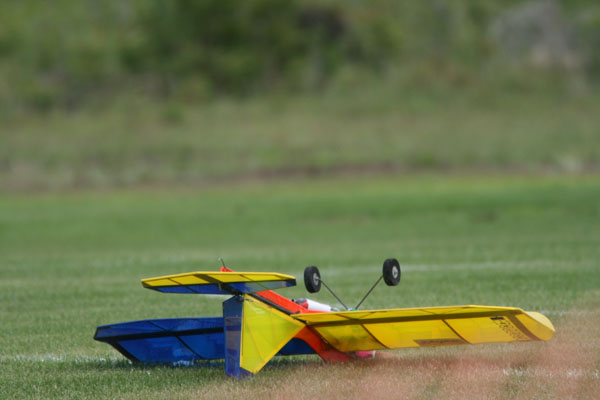
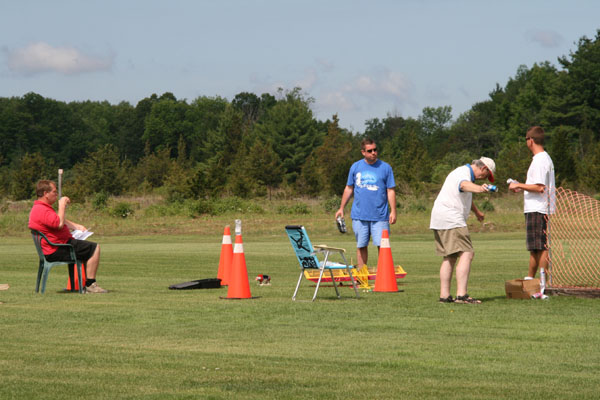

















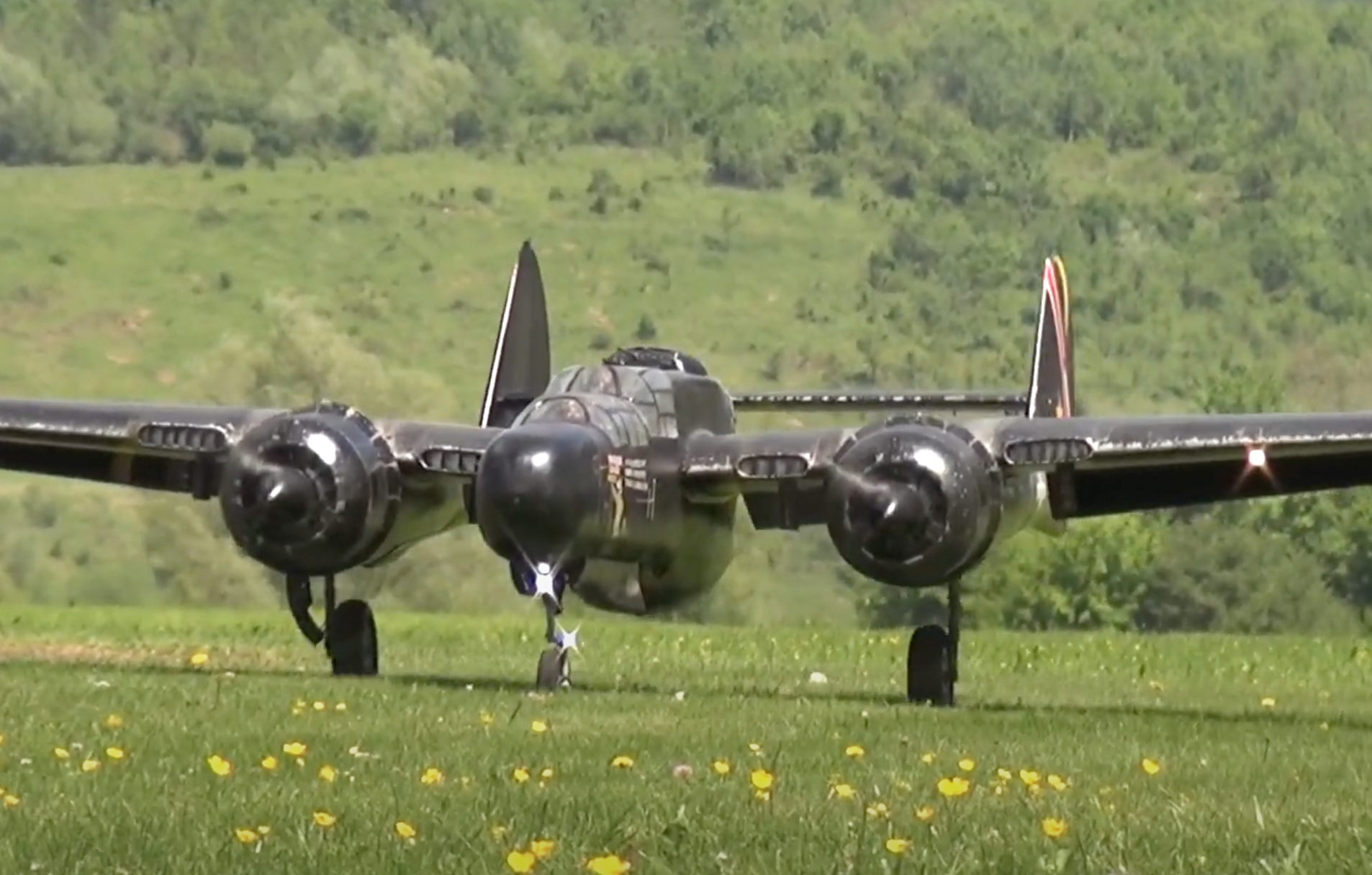



All the photos in this article I took at the annual Father’s Day Fun FLy event in Kingston Ontario Canada hosted by the great guys in the Kingston RC Club!
Hi Gerry
The good looking guy with the white shirt is Dan Luchaco from Sayre PA – Last weekend June 18/19th at the Kingston Fathers Day Fun/Fly comp won all the marbles getting 1st place in Expert. He almost didn’t get there as he got away with little damage from a midair
My Fliker account shows all the action from last weekend
http://www.flickr.com/photos/kennethpark/sets/72157626879935095
That’s his son Stevie holding the plane! Both amazing pilots for sure!!!
Gerry,
This article could not have come at a better time. I have been into RC flying for over thirty years and believe it or not I just attended my first event outside my club this year. Pretty sad, I know.
Our fun fly events have been pretty weak and I had nothing to compair them to despite the many articles that I have read. Your article has been the first one that brings out the what and why of fun flys.
Thanks
Ray
Hi, Gary,
If you look closely at the plane doing a touch and go, the flaperons are mixed with the elevators so that with mild up elevator, they are reversed to make the plane sink in flat more quickly. With large elevator throws, they are conventional. Years ago, I belonged to WCRC (Western Carolina Radio Control) south of Greenville, SC. The club was very serious about fun fly. Touch and goes had to be done with at least a 180 degree change of direction between touches. This quickly evolved into inside loops where you came tangent to the ground at the bottom. Ten of them took less than 13 sec if you were good. And then there was Double Dixie Death (roll, loop, spin, touch and repeat.) If you had to climb above 10 feet to begin, you were going to be too slow!
I am in Oklahoma now, and I miss that excitement of competition.
The words. Fun fly that means contest like the old days ,loops. ,bomb drop and so on. (Not come over and just fly around,I don’t no where that started. But it should stop). Go fun fly events